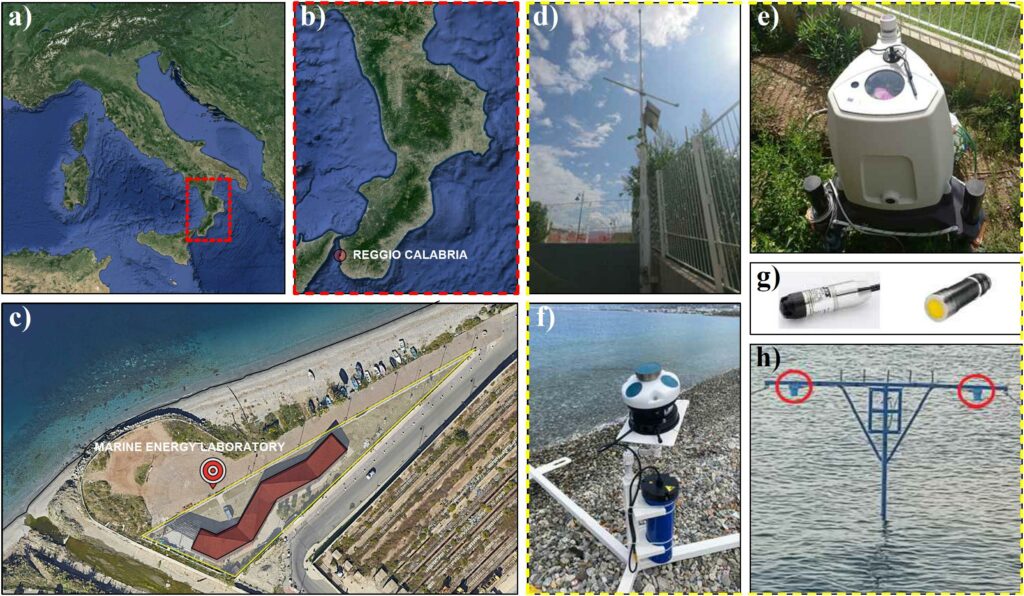Research group
- Prof. Pasquale Giuseppe Fabio Filianoti – Associate Professor
- Prof. Giuseppe Barbaro – Full Professor
- Dr. Emilio Lazzaro – PhD Student
Main Research topics
Topic 1: Marine Wave Mechanics
- Investigation of wave generation, propagation and transformation in coastal area and open-sea environments.
- Analysis of wave dynamics under different meteorological and oceanographic conditions.
Topic 2: Wave-Structure Interaction
- Investigation of wave forces on coastal and offshore structures.
- Evaluation of the impact of waves on the stability and performance of structures.
Topic 3: Monitoring of anemometric and maritime data
- Collection and analysis of wind and wave climate data for long-term environmental assessment
- Development of measurement techniques and data processing methods for oceanographic and meteorological studies.
FACILITY
The Natural Laboratory for Marine Energies (Renew Mel) is located on the east coast of the Strait of Messina, directly on the waterfront of Reggio Calabria, as shown in Fig. 1 (a), (b), (c). It has exclusive access to the sandy beach in front of the facility and to a body of water of about 1 ha (about 100×100 meters) that extends to a maximum depth of 30 meters and is bordered to the south by the mouth of the Calopinace stream. The short distance of the laboratory from the shore (less than 30 meters), and therefore from the water to be supplied, makes it possible to connect the instruments installed at sea directly to the laboratory by cable, via a connection node placed directly in the sea about 20 meters from the shore. The node can connect and supply power to up to 72 instruments simultaneously and is connected directly to the laboratory’s recording room via two underground cables. The laboratory has two meteorological stations, the Vaisala MAWS301 (Fig.1 (d)) and Deltaohm (Fig.1 (e)) and a Zephir ZX300 Lidar station (Fig.3 (f)) for measuring wind, pressure, temperature, humidity, solar radiation and precipitation. Ocean currents are monitored with Nortek AWAC AST 600kHz acoustic profilers (Fig.3 (g)), while waves are measured with Tritech PA500 underwater ultrasonic sensors and STS ATM/N pressure sensors as well as APG IRU 2003 airborne ultrasonic sensors (Fig.3 (h)). The local anemometric climate is characterized by a stable NNW wind (“Strait Wind”), which generates wind waves with a significant height between 0.2 and 1.0 m. The coastal configuration and limited fetch influence wave formation and make the site suitable for small-scale experiments.

Figure 1: Geographical location of the laboratory. MEL: (a), (b), (c); The equipment of the laboratory: (d) Vaisala MAWS301 weather station, (e) Deltaohm weather station, (f) Zephir ZX300 anemometer lidar , (g) Nortek AWAC 600kHz profiler current meter, (h) IRU 2003 ultrasonic from APG Sensors.
Reference Person
Pasquale Giuseppe Fabio FILIANOTI
Associate Professor
University Mediterranea of Reggio Calabria
Via marina bassa foce Calopinace, 89127 Reggio di Calabria (RC)
filianoti@unirc.it



